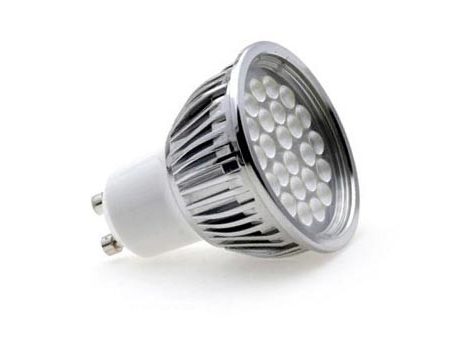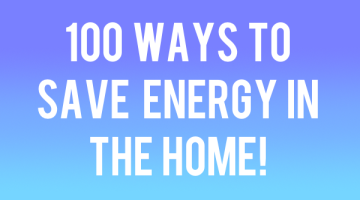
We frequently get asked how much money people can save if they changed to LEDs. Obviously there is no end to the amount of figures and percentages stating how much better they are than the incandescent and halogen bulbs… but what does it actually mean, how much could they save per year and what is their payback?
LEDs give you savings all year round
Most energy saving measures rely on the heating within the home. This often means that the savings are only seen throughout winter – when the outside temperature drops but installed insulation means you don’t have to have the heating on as much. However lighting is something that is required all year round whilst the savings are often ignored.
Case Study of an LED upgrade
I have decided to use a worked example in the hope that people will have the confidence to buy LEDs and start being more efficient immediately. This case study is a real property, located in Yorkshire, and is an example of how TheGreenAge have shaved money off the owners’ electricity bill.
Previous to TheGreenAge’s intervention, they had 35 halogen spotlights, each one guzzling 50W. Their electricity cost 12.5p/kwh and over the course of a year each light was on for an average of 5 hours per day. This meant that their electricity bill, for lighting only, come in at around £399.22.
Now what we did was to switch over to LEDs. These provide the same fantastic lumen output to halogens as well as being available in a choice of colour temperatures, while importantly running off a fraction of the electricity.
 How much did they save?
How much did they save?
So those 35 x 50W, GU10 halogen spotlights were replaced, without the need to alter the fittings, with direct 5W LED replacements. This meant that instead of 1,750W, they were now only using 175W to light their home, dropping their bills to just £39.92 – a massive saving of £359.98 per year!
Now obviously LED bulbs are slightly more expensive to buy; however they are designed and manufactured to last around 25 years. So those 35 bulbs that have been replaced will save an estimated £8,999.50 over the course of their lifetime.
Each bulb costs around £8.99, so the whole order was £314.65 – thats a payback of well under a year and clearly makes changing your lighting one of the most important efficiency measure to do.
Want to know more about LED bulbs? click HERE for our buyers guide to LED bulbs!
Don’t believe us? Have a look at the maths.
35 (bulbs) x 50 (watts) x 5 (h/d) / 1000 (kw) x 365 (year) x 0.125 (p/kwh) = £399.22
35 (bulbs) x 5 (watts) x 5 (h/d) / 1000 (kw) x 365 (year) x 0.125 (p/kwh) = £39.92
£399.22 (with halogen)- £39.22 (with LED) = £359.98 (savings per year)
Think we missed something? Do you have a different opinion?
Comment below to get your voice heard…












I have 12 halogen lights in my kitchen ceiling; they have a transformer. Could I really just plug in LED bulbs without changing the transformer? Thank you for your help. MP
Mel,
It sounds like they are MR16s if they have an independent transformer, in which case, no, you need an electrician to change the circuit over. Get them to put GU10s in for you.
If you are unsure, take a look at the bulb – if they have stubby round fat pins on them they are GU10, if the pins are thin and flat, they are MR16.
Well, I just found LED bulbs at the dollar store (similar to Pound Land) for $1 each. I just wish I had an option for my motion sensor locations, but unfortunately I have to change he fixtures and the switches there.
We presently light out home with 60w and 100w bulbs. When switching to all LED bulbs, what wattage would duplicate thebrightness of the 60s and 100s?
This is a must for everyone, I changed all the lights in our home last year, replaced around 80 bulbs with led alternatives, based on 5 hours usage every day with varying watts etc the original bulbs cost between £700 and £1000 every year to run!!!!
Replacement led bulbs reduced the bill to a little over £100 with the cost of the bulbs being recouped in under 6 months due to savings!
The best things I have found apart from the obvious savings are-
1) I never have to replace blown bulbs
2) The bright white almost light blue tints are fantastic in bathrooms, everything looks so clean and crisp
3) Instead of using the equivalent power of 16 solar panels just to offset lighting now 2 panels can produce enough power for all the lighting!
4) So much cooler! No heat is given from any of the lighting now which in the summer makes a huge difference but in the winter it is obviously more efficient to just turn the heating up a degree instead of heat from lights.
Honestly I’m not a world saving hippy but LED should be the standard now.